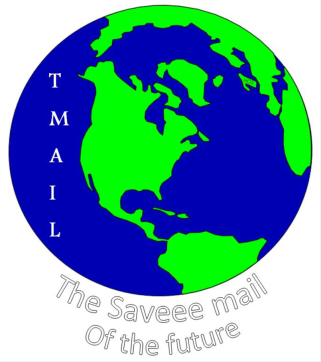

Tmail
The “savEEE” Mail of the future
Helping to… |
Save our Environment |
Save by Efficiency |
|
Save the Economy |
It’s a simple, fast and economical digital delivery system, of paperless mail to the masses
Aims
First and foremost, it needs to be understood that this project is to help save the planet by stopping the generation of paper junk mail!!
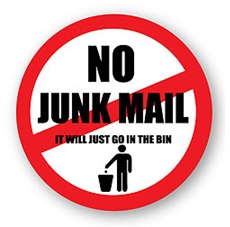
Many people have been trying for many years to abolish junk mail totally but with no success because they did not provide an alternative path for all those that rely on it to advertise their business or services and for all those that do use it.
But with our project (as an example) as much as we are asking people to stop using their petrol vans to go to the market to sell their goods, we are giving them electrical ones to use instead, which not only stops the pollution (which say was the goal) but it’s faster, cleaner and has more capacity for them.
It’s a win-win for all because the bi-product of our device actually benefits the advertiser and their customers whilst achieving its goal!!
So with our project it can finally be achieved!!
Concept
To help prevent global warming, protect the ECO system, prevent deforestation, and reduce land pollution and also river pollution.
Save the environment, help save millions of pounds for local authorities and so help the economy.
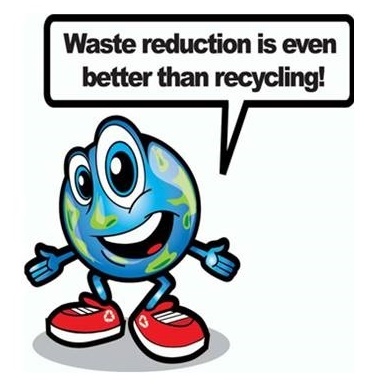
Reduce millions of tonnes of junk mail produced annually.
Digitalise all kinds of paper based materials used to advertise by distribution to residential homes and businesses.
Deliver fast, efficient and economical advertising in digital format.
Importance of Junk Mail
How many times have you received junk mail and just thrown it away without reading it?
Ever thought of how useful some of the information could be; in junk mail advertisement?
You could have missed many opportunities such as, free tickets to the Cinema, free pizzas, money saving vouchers etc.
This is why Tmail is “The SavEEE mail of the future”
Facts
The Royal Mail is already making an estimated £184 million a year by putting nearly three billion unaddressed marketing leaflets in the post, calculations show.
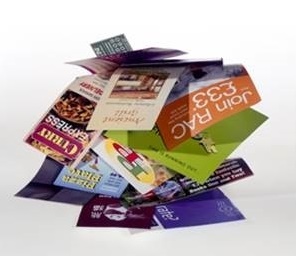
On Wednesday it emerged that the Royal Mail has urged businesses to send more unaddressed mail to households as a way to get around new stricter data protection laws coming in on 25th May 2018.
A loophole which allows firms to send households unaddressed junk mail must be closed, MPs and charities have said, as residents begin a rebellion against the Royal Mail.
Pressure is mounting on the Government to protect people from unaddressed mail ahead of an anticipated increase, following a data crackdown later this month.
At present the Mail Preference Service, used by 6.5 million people a year, lets households opt out of receiving addressed junk letters; however it does not stop unaddressed mail.
This is despite unaddressed mail accounting for around a third of all UK mail, according to Citizens Advice.
Last night MPs called on the Government and regulators to do more to protect households and the environment against the rise in unwanted and “irresponsible” junk mail.
£43m goes into reducing the amount of rubbish in the first place across all English and Welsh councils. The Audit Commission’s report on waste disposal, entitled Well Disposed, stated that councils feel they have little control over the amount of waste being produced locally. The commission predicted total municipal waste would continue to rise at about 1% per annum until 2020.
Each home on average gets 16 pieces of junk/circular mail per week (16 x 52 weeks = 832 x 27,089,900 houses = 22,538,796,800 pieces per year, which can be eliminated by this device) – (41pounds.org)
Statistics
Below are some important facts that, not only verify the need to stop junk mail, but also reveal staggering truths about the impact of consumption of materials and waste on the environment.
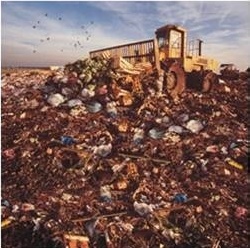
The Eco System & Natural Habitat
More than 100 million trees are destroyed each year to produce junk mail. 42% of timber harvested nationwide becomes pulpwood for paper. This in turn directly impacts on the climate, destroys natural habitat for many animals e.g. birds, insects and also plants etc. which leads to an unbalance in the natural eco system. – (41pounds.org)
Global Warming
The world’s temperate forests absorb 2 billion tons of carbon annually. Creating and shipping junk mail produces more greenhouse gas emissions than 9 million cars and so comes in as the third-largest industrial greenhouse gas emitter (after the chemical and steel industries). – (41pounds.org)
Water Wastage
About 28 billion gallons of water are wasted to produce and recycle junk mail each year. The pulp and paper industry is the single largest consumer of water used in industrial activities in developed countries. – (41pounds.org)
Land Pollution
40% of the solid mass that makes up our landfills is paper and paperboard waste. The majority of household waste consists of junk mail. The average adult receives 41 pounds of junk mail each year and 44% goes to the landfill unopened. Since junk mail inks have high concentrations of heavy metals, it makes the paper difficult to recycle so millions of gallons are injected into the ground through landfills. On average, we receive 16 pieces of junk mail a week, compared to only 1.5 personal letters. – (41pounds.org)
Air Pollution
The use of all diesel run heavy machinery, trucks and processing plants that produce and transport junk mail (from the cutting of the trees, to the delivery of the junk mail to people’s homes), throw vast amount of pollution in the air that we and our children have no choice but to breathe.
Water Pollution
Due to the land pollution because of landfills our rivers also get polluted hence impacting on river vegetation and marine life!

Financial Loss
Benefits to Advertisers & Customers
Both the advertisers and the customers will be helping the planet and also their local authorities.

No costly charges for printing master plates.
Your advertisement costs will be considerably reduced.
A considerable shorter time is taken from instruction, to delivery to the customer.
No printing delays or poor printing quality of advertisement.
The weather will not hinder the delivery of your advertisement.
The time taken to deliver will be significantly reduced.
Your delivery will be guaranteed.
There will be a better chance that your advertisement will be read.
It will stay on the device until the advertisement is read and can be filed easily for future reference.
The advertisement will stay readable for longer.
Unlike paper advertisement, the digital advertisement will not get misplaced and will be at hand when required.
Unlike paper advertisement, it will be read more easily by older people or people with visual difficulties, as they will be able to zoom in.
Since technical data will be saved from all projects, when changes that needs to be made to update the advertisement for another run, they can be done with ease, with minimum charge and time.
The advertiser no longer needs to have to run around to find someone suitable to design their advertisement and make sure that the format is compatible with the printer’s equipment.
Tmail will offer their services to work with the advertiser to create their artwork.
The advertiser can design their artwork themselves (to Tmail’s required spec).
The advertiser can send artwork from their preferred designer (to Tmail’s required spec).
The advertisers’ costs would rise considerably when widening their delivery area, whereas with Tmail the world would be at their fingertips at a small price.
Whereas, in other printed material advertisements (e.g. a leaflet), if say a few thousand leaflets are printed with certain opening times of a library, but then after a few months a small change of the opening times was made, then those thousands of leaflets become useless and the printing money goes down the drain. But with our system, since (as mentioned before) the templates are digitally saved, then all that would have to be done is to edit the time and resend the leaflet at a fraction of the cost of reproducing new master plates and reprinting. Needless to say then, that with this system the latest flyer or leaflet is uploaded to the customer.
Also many companies have many branches (say Tesco) but are unable to print leaflets/booklets with the individual branches’ phone number or special offers (because different branches do have different offers at the mangers discretion).This is because of its very high cost and so they only print generic ones that apply to all branches and only print one main office phone number that all national customers have to use (so with the main office switch board having to deal with all those customers, this must put a heavy strain on them). With our system the main artwork is always digitally saved so it can be tweaked to the branches advertising needs or changes and then the advertisement can be sent to the area they wish to market and have their direct number on that advertisement which would take a huge burden off of the main office switch board.
Frequently Asked Questions

Who does this idea benefit?
This idea benefits the forests, the carbon foot print, the eco system, the many endangered animals and insects, the land scape and rivers. The Government and their pledge on protecting the environment and help save on the cost of doing so. Save on the costs of landfills and the damage that landfills cause. Local authorities in cutting their cost on rubbish management. Business communities, the consumers and the telephone companies will gain a lot.
What benefit is there for the customer?
The customer will benefit by having all their mail in one tidy place. Be able to delete what they do not want knowing that it is not going to a landfill. Be able to save and file the information they wanted to keep and not worry about misplacing it or finding it all crunched up or unreadable when they do need it (as in paper format). Be able to zoom in and read the information comfortably without needing your glasses.
Would GDPR be a concern?
Since the information being sent in Junk mail is generic and does not hold any personal or sensitive information, GDPR would not affect this project. Also since the distributors are the council and the telephone companies (who already hold the telephone numbers for the advert to be sent) GDPR here is already covered. If any other provider is given licence, then this will be taken care of first.
Would it be cost effective?
This idea would cost the company a fraction of what it pays advertising the conventional way and also, not only be time saving but also be more reliable.
Would this idea cost the customer any money?
The customer will only have a small cost applied to them e.g. 50p a week (£2 a month) to help cover the cost of the display unit and also to make their life easier and the planet safer for the forthcoming generations.
Who would install the display unit?
The display unit can be installed by a number of people such as Local Council, an independent company, telephone companies, etc.
What benefit is there for the provider?
The provider will generate a new source of income from it with no extra costs to them.
How would all this work?
Firstly and ideally, a law should be passed banning paper junk mail to help save our planet.
The business would request Tmail to send out their leaflet/letter. Then the business would either provide Tmail with their digital advertisement or ask Tmail to design it.
Tmail would then send a copy of that advertisement to the provider (with the delivery details or area code) to which they have to send the advertisement to.
The provider would then send that advertisement to all the addresses within that area code or to the address details.
On receiving confirmation on the number of addresses the provider has delivered to, the provider would get paid accordingly.
Note: The provider can be anyone that has been given a licence.
What if sceptics say that some people may have personal issues with the device being in their home, because?
They do not want any Junk Mail
Many people do refuse to have junk mail to their home not because they do not think it’s relevant or it’s a waste of time but because of the impact that the junk mail has on all the points that have already been stated. Through our research we have found that if the negative effects of junk mail on the planet and the burden it puts on tax payers money to collect and dispose were prevented then, as one person stated “then yes there is a lot of good and useful information on some of the stuff that comes through the door”.
It has also come to light that even though people put stickers on their door for no junk mail, things still come through! And as stated before, the sadness thoughts then comes through the home owners mind as to where it is going to end up and the overall effect it will then have on the planet, hence why they put the sticker on the door in the first place.
They are scared that the unit is there to spy on them
Unlike other devices that are being put into people’s homes (in the masses nationwide!) for various data collection (which are usually receiver/transmitter devices), this device is only a receiver so no personal data of any sort gets sent out!
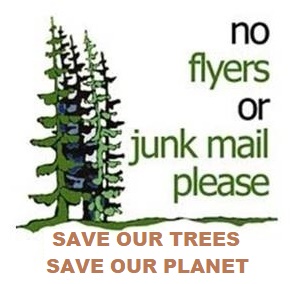
For further information please Email: tmail@hosinnovations.com